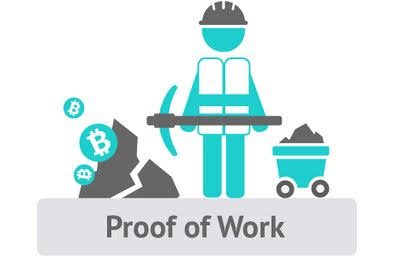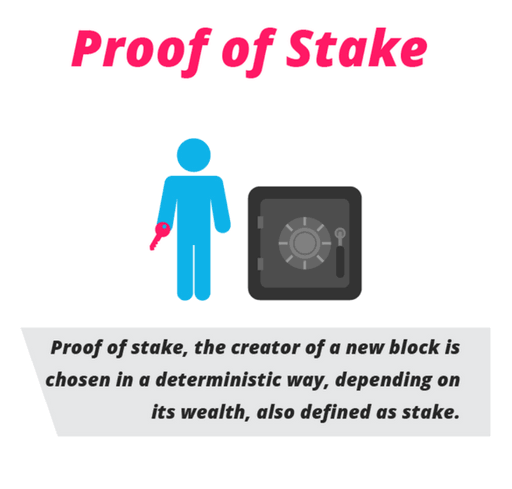
Designed in canva
Greetings Steemians welcome to my homework post for task 6, I would be completing this task based on the questions below.
Question 1
What is the difference between PoW & PoS? Advantages & Disadvantages? Which one is better in scaling Capacity? Examples?
Introduction
In a decentralized system, transactions are being kept public, secure and free from central authority through a process called consesus mechanism these are governing algorithms which endeavors that miners and other users are in agreement to ensure the originality and transparency of the system.
PoW and Pos are both types of consensus mechanisms that governs the authentication of new blocks and transactions added to the system. They both aim at bringing about consensus on a blockchain but implore different approach.
PoW
The PoW which simply means Proof of Work was created in the year 1993 by Moni Naor and Cynthia Dwork. It is the first and oldest consensus algorithm adopted by bitcoin. It authenticates new blocks and transactions by allowing nodes compete to validate new block creation and transactions by generating cryptographic hashes through solving complex mathematical problems, the complexity of these problems requires very sophisticated systems with very high computing power and this discourages and stops anyone from attacking the system. The problem with this mechanism it requires sophisticated systems that are not environmental friendly.
| S/N | Advantages | Disadvantages |
|---|---|---|
| 1 | The PoW mechanism makes use of sophisticated systems to solve complex problems thus making it really difficult for attack | The sophisticated systems used by the PoW require high energy consumption which increase cost and makes it hard on the miners |
| 2 | Miners are rewarded for each block they add and authenticate with freshly mined coins and also transaction fees | PoW accelerates a decline in mining as new minted coins are needed to reward miners |
| 3 | The PoW mechanism promotes decentralization in a way as any miner or node can participate in adding and authenticating a block | This consesus mechanism can somehow lead to centralization because sophisticated systems with high energy consumption are needed |

PoS
The PoS which simply means Proof of Stake was first adopted by the peercoin in the year 2012. It was created as an alternative to the PoW, it solves most of its disadvantages by reducing high energy consumption, eliminating miners and also eliminating the need for sophisticated systems. Nodes for authentication of blocks are chosen randomly depending on the amount of token the user owns and stakes that is to say the higher the token and staking age the higher the chances of being chosen by the system to verify transactions.
| S/N | Advantages | Disadvantages |
|---|---|---|
| 1 | The PoS is an efficient consensus mechanism that does not require very sophisticated device | The PoS mechanism posses a risk of centralization, although the system chooses randomly there are still requirements such as high crypto currency and staking hurting the chances of those with low staking. |
| 2 | The PoS does not require high energy consumption and is environmental friendly | in PoS all users do not have equal power or chances |
| 3 | The PoS mechanism protects the blockchain from fraudulent activities by giving a gain percent for proper validation and a loss percent for improper validation |


There are many differences between these consensus mechanism although their end game and aim is mostly the same. Below are a few differences;
| S/N | Proof of Work (PoW) | Proof of Stake (PoS) |
|---|---|---|
| 1 | The PoW requires sophisticated computer systems to verify transactions and mine. | The PoS does not require high power systems as any one can suffice in the validation of transactions and blocks. |
| 2 | PoW consumes high energy as it is expensive to maintain | PoW requires minimal energy |
| 3 | Nodes and Miners in the PoW compete among each other to solve the mathematical problems and create a block. | Nodes in PoS are randomly selected by the algorithm to validate a block or transaction. |
| 4 | No others requirement is needed by a node to be able to mine or verify transactions. | In PoS a node with high cryptocurrency and stake is chosen by the system to verify transactions. |
| 5 | Miners in PoW are rewarded with block rewards and transactions fees. | Nodes are rewarded with transactions fees. |
| 6 | Transaction verification is much slower here bringing about scalability problems. | Transaction verification is faster as much persons can easily be chosen as validators making it more scalable. |
| 7 | In the PoW fraudulent activities can only occur when the attacker has about 51% of the computational power required to solve complex mathematical problems. | while in PoS the attacker must have about 51% of the cryptocurrency of that blockchain. |
| 8 | News coins are minted in PoW. | New coins are not minted in PoS. |

Which one is better in scaling capacity? Examples?

From the lecture and research it is noted that transactions are validated at a faster rate in the PoS, so I would say that the PoS is better in terms of scaling capacity because it allows more nodes to participate and requires little energy consumption. The PoS is efficient.
Examples
The following are examples of cryptocurrency that makes use of the PoS mechanism;
● Etherum:
Etherum is one of the most popular crypto currency that makes use of the proof of stake as a lot of dApps are built on it and there is great need for scalability.
●Tezos

source
●Akash Network (AKT Token)
Conclusion
The consensus mechanism is required for security, transparency and reliability in a blockchain. Special appreciation to @sapwood for this great lecture.




Greetings @sapwood , my post has not been graded yet and it is 6days now. Please kindly look into this. Thank you.
Downvoting a post can decrease pending rewards and make it less visible. Common reasons:
Submit